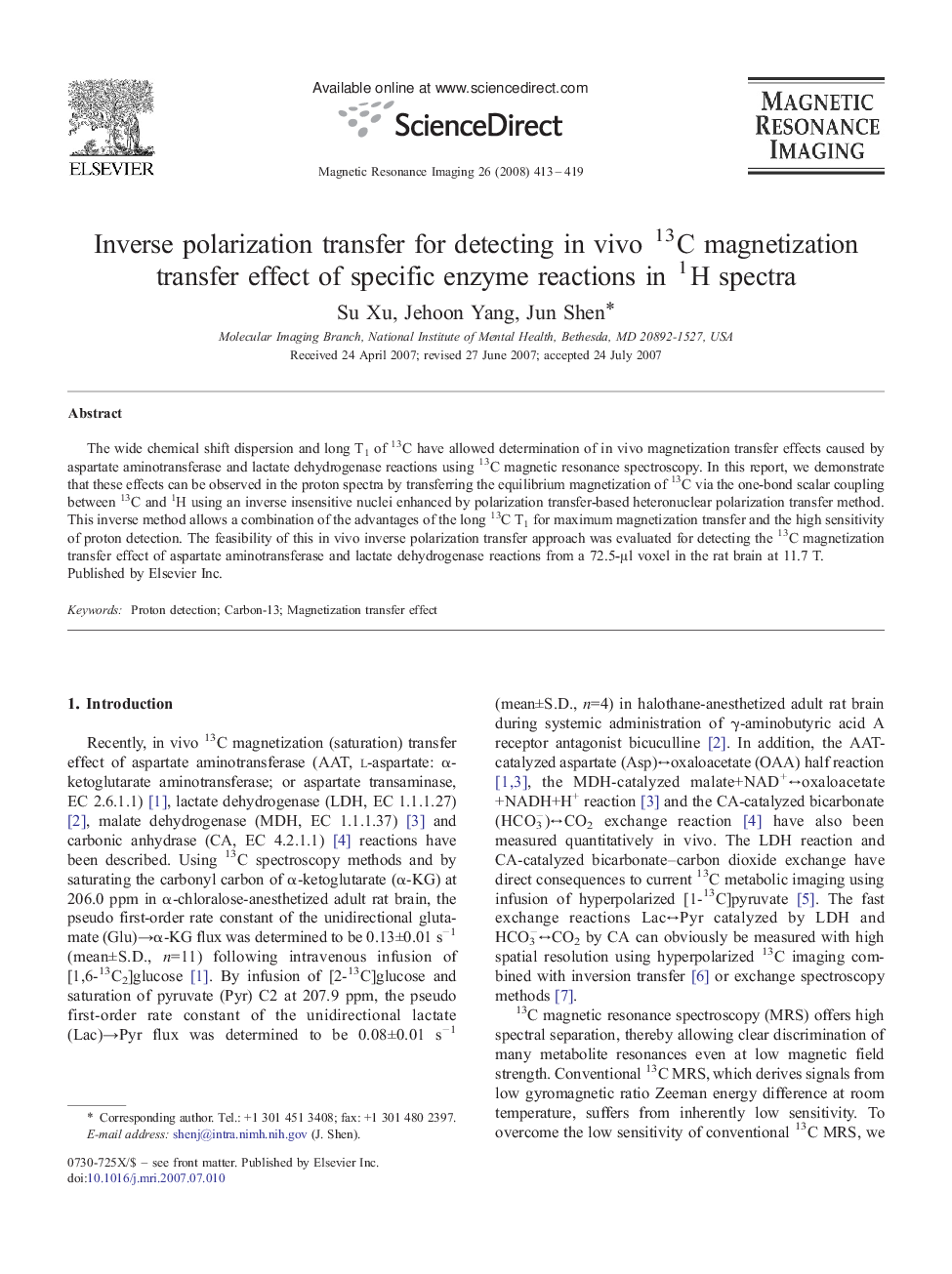| Article ID | Journal | Published Year | Pages | File Type |
|---|---|---|---|---|
| 1807265 | Magnetic Resonance Imaging | 2008 | 7 Pages |
Abstract
The wide chemical shift dispersion and long T1 of 13C have allowed determination of in vivo magnetization transfer effects caused by aspartate aminotransferase and lactate dehydrogenase reactions using 13C magnetic resonance spectroscopy. In this report, we demonstrate that these effects can be observed in the proton spectra by transferring the equilibrium magnetization of 13C via the one-bond scalar coupling between 13C and 1H using an inverse insensitive nuclei enhanced by polarization transfer-based heteronuclear polarization transfer method. This inverse method allows a combination of the advantages of the long 13C T1 for maximum magnetization transfer and the high sensitivity of proton detection. The feasibility of this in vivo inverse polarization transfer approach was evaluated for detecting the 13C magnetization transfer effect of aspartate aminotransferase and lactate dehydrogenase reactions from a 72.5-μl voxel in the rat brain at 11.7 T.
Keywords
Related Topics
Physical Sciences and Engineering
Physics and Astronomy
Condensed Matter Physics
Authors
Su Xu, Jehoon Yang, Jun Shen,
